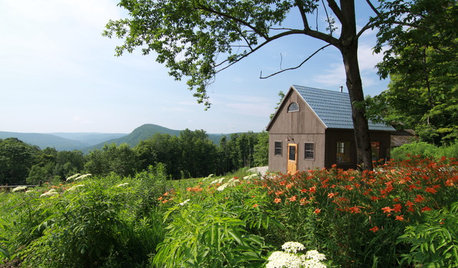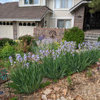Adding to, Days-to-maturity
digit
9 years ago
Related Stories

GARDENING GUIDESHow to Keep Your Trees Healthy
Ensure your trees’ vigor for years to come with these tips for protecting roots, watering effectively and more
Full Story
DECORATING GUIDESRoom of the Day: Adding Comfort and Style to a New Jersey Family Room
Layers of natural textures and pops of color help create a welcoming and cozy space for a couple and their baby
Full Story
MOST POPULARThe 25 Most Popular Photos Added to Houzz in 2013
See the newly uploaded images of kitchens, bathrooms, bedrooms and more that Houzz users really fell for this year
Full Story
GREAT HOME PROJECTSWhat to Know About Adding a Reclaimed-Wood Wall
Here’s advice on where to put it, how to find and select wood, what it might cost and how to get it done
Full Story
KIDS’ SPACESRoom of the Day: Chasing Rainbows for a Girl’s Room Makeover
A girl’s no-frills bedroom is transformed into a colorful and stylish space that goes the distance
Full Story
KIDS’ SPACESRoom of the Day: The Young Adults’ Section
A Connecticut couple create a fun yet sophisticated hangout space for their maturing children
Full Story
ATTICSRoom of the Day: Cramped Attic Becomes a Grown-Up Retreat
A New Jersey couple renovates to create a new master bedroom in a space once used for storage
Full Story
LIVING ROOMSRoom of the Day: Curiosities Bring Quick Intrigue to a Living Room
From blank box to captivating, exotic concoction, this room goes for the wow factor — and the whole house took just 4 days
Full Story
ROOM OF THE DAYRoom of the Day: A Maine Guest Cottage Steeped in Charm
Once offering eggs for sale, this little guesthouse now offers a serene experience in a refined rustic setting
Full Story
CABINSRoom of the Day: Timber-Frame Cabin Inspires Couple’s Creative Pursuits
This work studio, built in a simple vernacular architectural style, sits near a couple's rural home in the Berkshire mountains
Full StoryMore Discussions









ZachS. z5 Platteville, Colorado
david52 Zone 6
Related Professionals
New Bedford Landscape Architects & Landscape Designers · Comstock Park Landscape Architects & Landscape Designers · Fillmore Landscape Architects & Landscape Designers · Rancho Cordova Landscape Architects & Landscape Designers · South Elgin Landscape Architects & Landscape Designers · Tempe Landscape Contractors · Braintree Landscape Contractors · Duarte Landscape Contractors · Glendale Heights Landscape Contractors · Harrisburg Landscape Contractors · Hurricane Landscape Contractors · Kaysville Landscape Contractors · Parkland Landscape Contractors · Red Oak Landscape Contractors · Fontana Solar Energy SystemsdigitOriginal Author
jaliranchr
mayberrygardener
digitOriginal Author